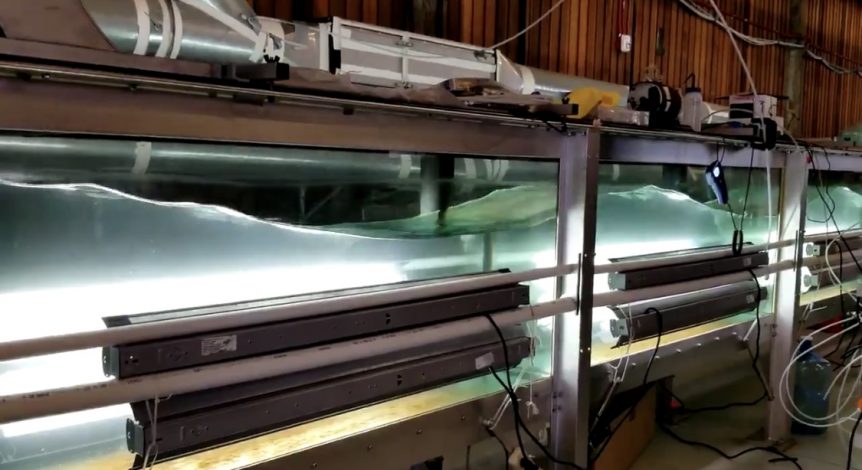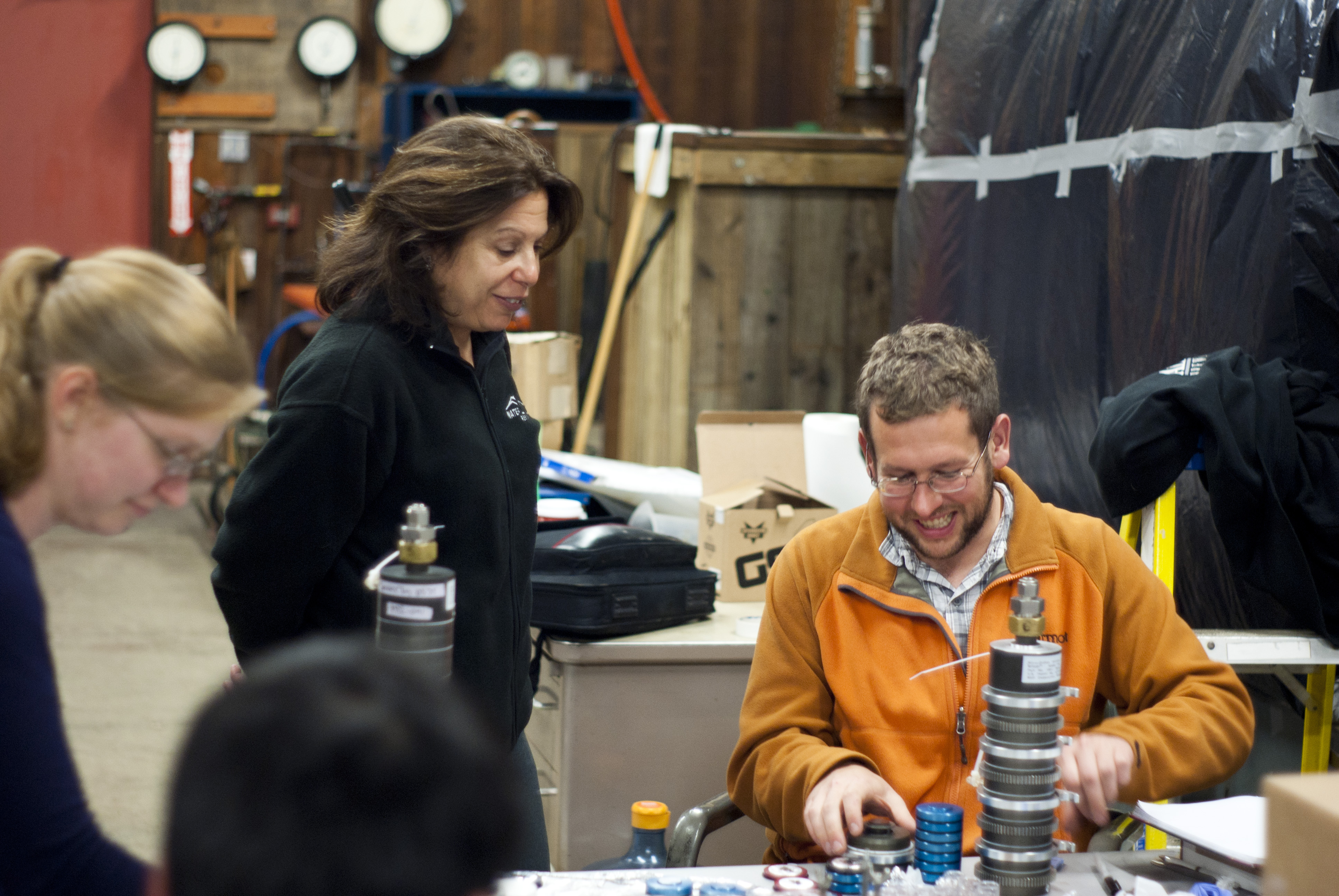It is great to be here as part of the Center for Aerosol Impacts on Climate and the Environment (CAICE) intensive. I visited this summer when some of the first measurements of the size distribution and size-resolved composition of sea spray aerosol were being made from the wave flume. At that time, I was excited about the “ocean in the lab” setup to measure aerosol production from sea spray that Kim, Tim and their research groups along with experienced SIO scientists had achieved. Now coming back for the intensive, I am even MORE excited about the possibilities of what can be learned from this highly unique opportunity for realistic measurements of the physicochemical properties of sea spray aerosol. It is amazing to see all the different research groups and instruments that are involved in the intensive. Some of these initial measurements show that the ocean generates a chemically diverse and complex mixture of components that depend on size and marine biogeochemistry. This ocean mesocosm truly provides for an unprecedented opportunity to better understand the chemistry of sea spray aerosol.
Currently, there are on-line measurements being made of aerosol properties and off-line measurements of substrate deposited aerosols. These off-line measurements allow us to further explore the chemistry and properties of sea spray aerosol with a wide variety of spectroscopic and microscopic probes. Some of these off-line measurements are being done during the intensive, while others will be done after the intensive is over. Dr. Defeng Zhao, postdoc at UCSD, has looked at some of these particles with Raman spectroscopy. Some of the analysis of his data are straightforward for some inorganic components (e.g. the presence of CaSO4) but other data are more complex (e.g. some of the organics show very interesting spectra –perhaps amino acids?). Today we will get together to brainstorm some more in analyzing some of these initial vibrational spectra of single particles generated from the wave flume. But even more is planned as Dr. Andrew Ault, a postdoc at the University of Iowa, has been part of setting up the intensive and will be bringing some of these samples back to Iowa for further analysis.
So after the last wave breaks and all the data are collected, assembled and further analyzed, I expect there to be MANY publications that arise providing insights into the chemistry of aerosols and their impact on climate and the environment that were not hitherto possible.
Vicki H. Grassian, F. Wendell Miller Professor of Chemistry, University of Iowa


